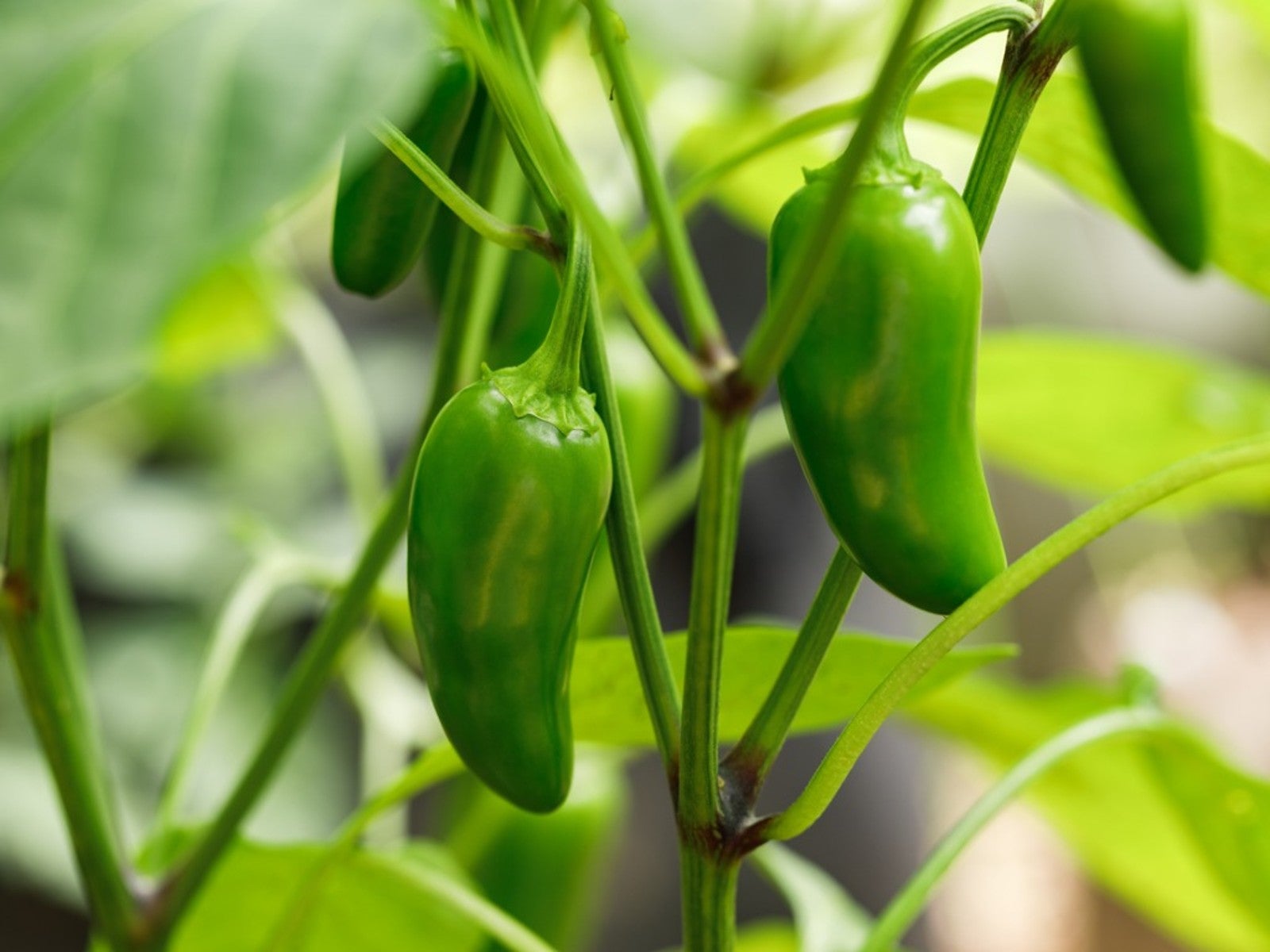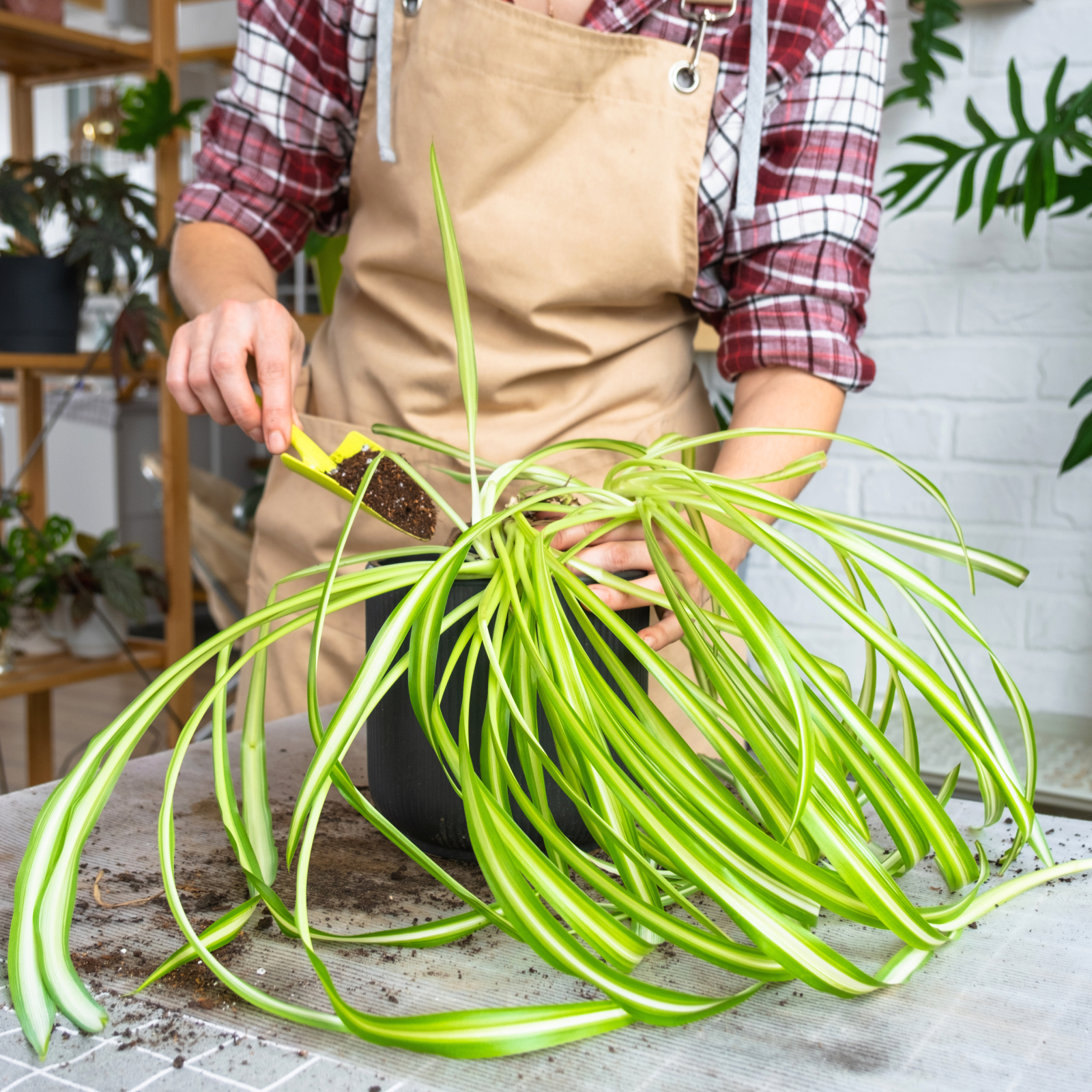Jalapeño Plant Care - How To Grow Jalapeño Peppers

Quick Jalapeño Facts:
- Botanical name: Capsicum annuum ‘jalapeño’
- Height: 2-3 feet (61-91 cm)
- Spread: 15-18 inches (38-46 cm)
- Sun exposure: Full sun
- Soil requirements: Rich, moist, well-draining
- Hardiness zones: USDA 2-9
Plant Jalapeño!
Want to add some spice to your life? Plant jalapeño peppers this spring! A jalapeño pepper plant is in the moderate range for heat when it comes to peppers, so it’s just right for most people.
Growing and caring for jalapeños isn’t difficult provided you have plenty of warm, sunny weather for a few months. Interested in growing your own jalapeños? Keep reading to learn about jalapeño plant care.
About Jalapeño Peppers
Jalapeño peppers are a type of chili pepper, Capsicum annuum, that encompasses not only sweet bell peppers but habanero and cayenne peppers as well. The name “jalapeño” is Spanish for “Jalapa”, the capital of Veracruz, Mexico where jalapeños were originally cultivated.
The heat from peppers comes from the capsaicin found in the fruit. In terms of spiciness, jalapeños are fairly mild, ranking at 2,000-8,000 Scoville Heat Units (SHU). This might seem hot, but compare it to a cayenne pepper which falls into the range of 30,000-50,000 SHU!
Jalapeño Plant Care
Jalapeño pepper plants require full sun for 5-6 months from sowing, at which point the first round of fruit will be ready for harvest. They can be grown as annuals in USDA zone 2-9, as perennials in zones 10-11, or can be overwintered for another harvest the following year.
Don’t plant your jalapeños near other members of the Solanaceae (Nightshade) family. Nightshade members like peppers and tomatoes are susceptible to the same pests and disease and can infect each other.
How to Plant Jalapeño Seeds
Because peppers have a long growing season, most people start seeds indoors or purchase plants to transplant. Some gardeners wait until at least two weeks after planting tomatoes to plant jalapeño pepper seedlings in the garden.
Gardening tips, videos, info and more delivered right to your inbox!
Sign up for the Gardening Know How newsletter today and receive a free copy of our e-book "How to Grow Delicious Tomatoes".
Jalapeño seeds can be directly sown in the garden once soil temps are at least 65 F (18 C) or started indoors 8-10 weeks before your area's last frost date. Temperature is critical, and unless it’s warm enough, pepper seeds won’t sprout and transplants won’t survive. Conversely, jalapeño pepper plants will not produce an abundance of fruit when the temperature is over 90 F. (32 C.)
Select a site that is in full sun. Set seeds about 14-16 inches (36-40 cm) apart and 2-3 feet (61-91 cm) apart in rows. Cover the seeds lightly with soil.
Transplants can be moved into the garden when night time temperatures are over 60 F (16 C). Be sure to harden off transplants that have been grown indoors by placing them outside in ever increasing sun exposure over the course of about a week to avoid shock. Jalapeños can be grown in the garden, and also do well when grown as container pepper plants.
Water
Keep jalapeño plants consistently moist. Although jalapeño plant care isn’t difficult, plants must be kept watered during hot, dry spells. It’s best to avoid getting water on the fruit, so drip irrigation is the best form of watering for jalapeño plants.
Light
Jalapeño peppers should be grown in with at least 6 hours, preferably more, of full sun.
Temperature and Humidity
Jalapeño temps should be between 65-85 F (20-29 C) during daytime hours and 60-70 F (16-21 C) at night. Soaring temperatures over 90 F or cold temperatures will result in blossom drop and a lack of fruit. Humidity levels for this pepper are moderate.
Soil
Jalapeños grown in the garden thrive in fertile, moist, well-draining soil that is neutral to slightly acidic. Potted jalapeños prefer a rich, all-purpose potting mix that is well-draining. Peppers, including jalapeños, do best in loamy, well-drained soil with plenty of organic matter. Full sun and warm temperatures are also important when growing jalapeño peppers.
Fertilizer
Peppers are general are heavy feeders, so you should add plenty of rich compost to their soil prior to planting. Apply a side dressing of compost or balanced fertilizer during the growing season. Container grown peppers are particularly susceptible and will benefit from a balanced granular fertilizer or a layer of compost spread at the base of the plant before blossoms form.
How to Harvest Jalapeño Peppers
At maturity, a jalapeño pepper plant is about 2-3 feet (61-91 cm) tall and will produce 30-40 medium sized peppers over the course of weeks.
Jalapeños are harvested when the peppers are green but if allowed to stay on the plant, they will ripen to red, orange or yellow. This should coincide with either 5-6 months after planting or 60-80 days from transplanting. If you prefer your peppers spicier, wait until they turn red to harvest.
Harvest jalapeño peppers before they turn color by pinching them carefully from the stem when they are firm and solid-colored.
Problems, Pests and Diseases
Jalapeños are nightshade plants like tomatoes, potatoes, and eggplant, and are vulnerable to similar diseases and pest problems. Keeping pepper plants well-watered and your garden area clean of rotting debris will help to keep pest problems to a minimum.
Aphids, mites, cucumber beetle larvae, and pepper hornworms are all jalapeño pests.
- Aphids can be removed or reduced with an insecticidal soap, sprayed with water or through use of an organic pesticide like neem oil.
- Cucumber beetle larvae can damage the root system of the plant. Keep the area around the peppers weed free to thwart beetle breeding.
- Pepper hornworms chew big holes in the foliage of the plant. They are obvious and can be picked off the peppers and dispatched in some soapy water.
- Fusarium wilt is a fungal disease that can infect jalapeño pepper plants which causes yellowing and generally weakens the plant. Fusarium wilt can be combated by keeping plants healthy and unstressed
- Anthracnose, another fungal disease, exhibits sunken spots on the fruit. Pepper plants with anthracnose must be destroyed.
- Worms or caterpillars should be picked off plants and thrown away. It is a good idea to check plants daily for pests.
Pruning
While it’s not really necessary, pruning may help increase fruit production and result in a sturdier plant. Pruning can also be done at the end of the season to open up the canopy of the plant. This will allow more light in and can reduce the number of small fruit so that larger, more mature fruit will have time to ripen before the first frost.
Prune your plants at the time of transplanting, or soon after when the plant is at least a foot (30 cm) tall. Cut or pinch back the stems of the jalapeño to the second or third leaf set. This is called topping and will result in a fuller plant. As you prune, make sure not to damage the Y-shaped branching of the pepper plant.
Propagation
You can propagate jalapeño pepper plants using cuttings or seeds.
To take cuttings, look for a medium sized, malleable, soft, green branch at the top of the plant. Make a clean diagonal cut making sure to leave at least 2-3 nodes on the branch above the cut. Remove any leaves, fruit or flowers. Either submerge your cutting in water up to the first node or dip the cutting in rooting hormone and then place it in water.
Keep an eye on the water level and refresh it as needed. After a month or so, the cutting should begin to form roots. When they are 1-2 inches (2.5-5 cm) long, transfer the cutting to potting soil.
Harvesting seeds from your pepper fruits is fun, but saving seeds from hybrid varieties may disappoint you. The new plant won’t turn out the same as their parents. It might be worth it to purchase new seeds instead.
Jalapeño Varieties
There are so many jalapeño varieties available now that “jalapeño” is more of a category. Today you can choose from Billy Biker, Early, El Jefe, Goliath, Jalafuego, Jaloro, Jedi, Lemon Spice, Mattapeno, Mammoth, Mucho Nacho, Orange Spice, Pumpkin Spice, Purple, and TAM.
You can dry jalapeños, freeze them, or use them in salsa and sauces.
Love Gardening Know How? Our latest book, The Complete Guide to Vegetable Gardening, is available now!
Perfect for the gardener in your life, or for your own coffee table, this book boasts 224 pages of high-quality pictures, expert tips, and easy-to-follow advice to get your vegetable garden growing its best. Look for it at these sellers, and wherever quality books are sold.
- Amy GrantWriter
-
 4 Superfast Composting Methods: Turn Waste Into Garden Gold In 30 Days Or Less
4 Superfast Composting Methods: Turn Waste Into Garden Gold In 30 Days Or LessTry the fastest composting methods to turbocharge your pile and transform kitchen scraps and garden waste into finished compost in just a few weeks.
By Mary Ellen Ellis
-
 Best Spider Plant Soil – Complete Soil Guide And Expert Tips For Keeping Plants Happy
Best Spider Plant Soil – Complete Soil Guide And Expert Tips For Keeping Plants HappySpider plants are fun and easy plants to grow, but what is the best soil for a spider plant? Selecting the right soil is important so they can thrive.
By Bonnie L. Grant